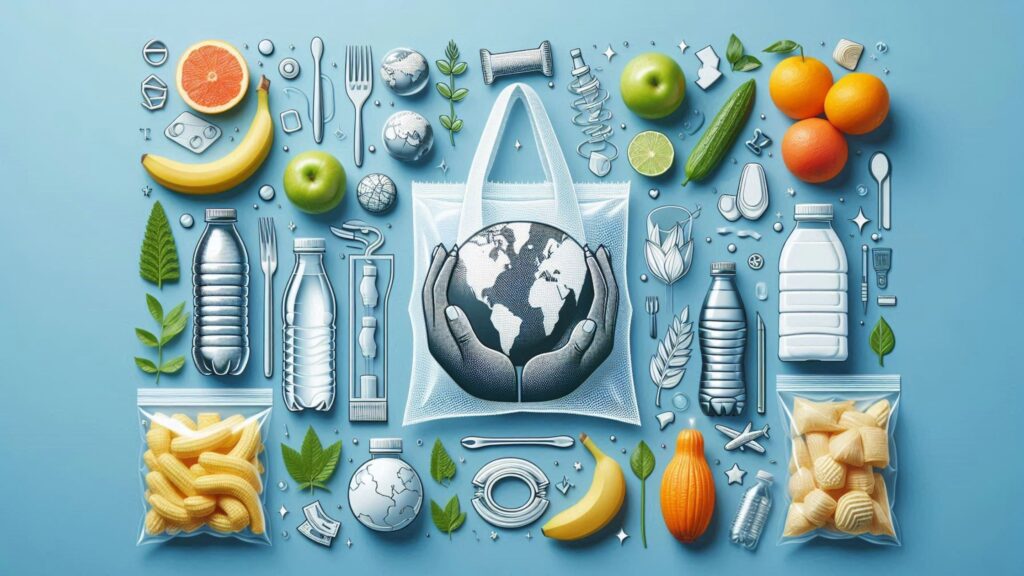Polybag packaging is an essential component of modern packaging solutions, widely used across industries for its versatility, affordability, and durability. From e-commerce and retail to food and medical supplies, polybags provide a practical way to store, transport, and protect products.
In this guide, we’ll explore everything you need to know about polybag packaging—its benefits, common uses, environmental impact, and sustainable alternatives.
What is Polybag Packaging?
Polybag packaging refers to plastic bags made from polyethylene or polypropylene, designed to hold and protect various products. These bags come in different sizes, thicknesses, and styles, including clear, printed, zip-lock, self-sealing, and biodegradable options.
Polybags are widely used in industries such as fashion, e-commerce, food packaging, and pharmaceuticals due to their lightweight nature and cost-effectiveness.
Benefits of Polybag Packaging
1. Cost-Effective
Polybag packaging is one of the most economical packaging solutions available. It requires less material to produce than rigid packaging, reducing production costs and making it an affordable choice for businesses.
2. Lightweight and Flexible
Compared to boxes or rigid plastic containers, polybags are lightweight, which reduces shipping costs and makes handling easier. Their flexibility allows them to conform to different product shapes, making them ideal for packaging a variety of goods.
3. Durability and Protection
Polybags are resistant to moisture, dust, and dirt, providing excellent protection for items during storage and transit. Some polybags even offer UV protection, keeping products safe from sunlight exposure.
4. Customizable and Brand-Friendly
Businesses can print logos, product information, or promotional designs on polybag packaging, making it an effective branding tool. Custom polybags enhance brand visibility and create a professional look for packaged products.
5. Transparency and Visibility
Clear polybags allow customers to see the contents inside without opening the package, which is particularly useful for retail packaging and product displays.
6. Eco-Friendly Options Available
With growing environmental concerns, manufacturers now offer biodegradable and recyclable polybag options, helping businesses reduce their carbon footprint.
Common Uses of Polybag Packaging
1. E-Commerce and Shipping
Online retailers use polybag packaging for apparel, accessories, and other soft goods. Poly mailers, a type of polybag with an adhesive seal, are commonly used to ship lightweight items efficiently.
2. Apparel and Fashion Industry
Clothing brands package garments in clear polybags to protect them from dust, moisture, and wrinkles. These bags often include warning labels for safety compliance.
3. Food Packaging
Food-grade polybags are used to store perishable items like bread, fruits, vegetables, and snacks. Resealable polybags help maintain freshness and extend shelf life.
4. Pharmaceuticals and Medical Supplies
Sterile polybags are essential in the medical industry for packaging bandages, syringes, and other disposable medical equipment.
5. Industrial and Manufacturing
Manufacturers use polybags to package small components, screws, and machine parts. Anti-static polybags are used for electronic components to prevent damage from static electricity.
Environmental Impact of Polybag Packaging
While polybag packaging offers many benefits, it also raises environmental concerns due to plastic waste. Traditional polybags are made from petroleum-based plastics, which take hundreds of years to decompose.
Challenges of Traditional Polybags:
-
Contribute to plastic pollution
-
Often end up in landfills or oceans
-
Harmful to wildlife and marine ecosystems
However, businesses and consumers are shifting toward sustainable alternatives.
Sustainable Polybag Packaging Options
1. Recyclable Polybags
Recycling programs for polyethylene bags are increasing, allowing businesses and consumers to dispose of used polybags responsibly. Many polybags are made from LDPE (Low-Density Polyethylene) or HDPE (High-Density Polyethylene), which can be recycled into new products.
2. Biodegradable and Compostable Polybags
Biodegradable polybags break down faster than traditional plastic, often made from plant-based materials like cornstarch. Compostable polybags go a step further, decomposing into natural elements without leaving harmful residues.
3. Reusable Polybags
Some companies encourage reusable polybag packaging for multiple uses, reducing single-use plastic waste. These include thicker, durable polybags designed for repurposing.
4. Alternative Packaging Materials
Businesses are exploring paper-based mailers, fabric bags, and mushroom-based packaging as eco-friendly replacements for plastic polybags.
How to Choose the Right Polybag Packaging for Your Business
When selecting polybag packaging, consider the following factors:
-
Product Type – Choose a bag that provides adequate protection and visibility for your product.
-
Size and Thickness – Opt for the right dimensions and material strength to prevent tearing.
-
Closure Type – Decide between zip-lock, adhesive seal, or heat-sealed options based on security needs.
-
Environmental Impact – Consider recyclable, biodegradable, or reusable alternatives to minimize plastic waste.
-
Branding Opportunities – Custom printing can enhance brand recognition and improve customer experience.
Conclusion
Polybag packaging remains a popular and practical choice across various industries due to its affordability, versatility, and protective properties. However, with increasing environmental awareness, businesses are adopting more sustainable polybag options, such as biodegradable and recyclable materials.
By making conscious packaging choices, companies can balance functionality with sustainability, reducing plastic waste while maintaining cost-effective and efficient packaging solutions.
Whether you’re an e-commerce brand, a retailer, or a manufacturer, polybag packaging can help streamline your packaging process—especially when used responsibly.
Would you consider switching to eco-friendly polybag packaging for your business? Share your thoughts in the comments!
Related Articles
- The Versatility and Importance of Plastic Wrap Packaging
- Shredded Paper for Packaging: A Sustainable and Cost-Effective Solution
- Bubble Packaging: The Ultimate Solution for Protection and Sustainability
- Sandwich Packaging: Ensuring Freshness, Sustainability, and Appeal
- Biodegradable Food Packaging: A Sustainable Solution for the Future
- Eco Friendly Food Packaging: A Sustainable Choice for the Future
- Tissue Paper Packaging: The Eco-Friendly & Elegant Solution
- The Importance of Bakery Packaging: Enhancing Freshness and Branding
- Gift Packaging: Making Every Present Special
- Jewelry Packaging: Elevate Your Brand and Unbox Elegance

